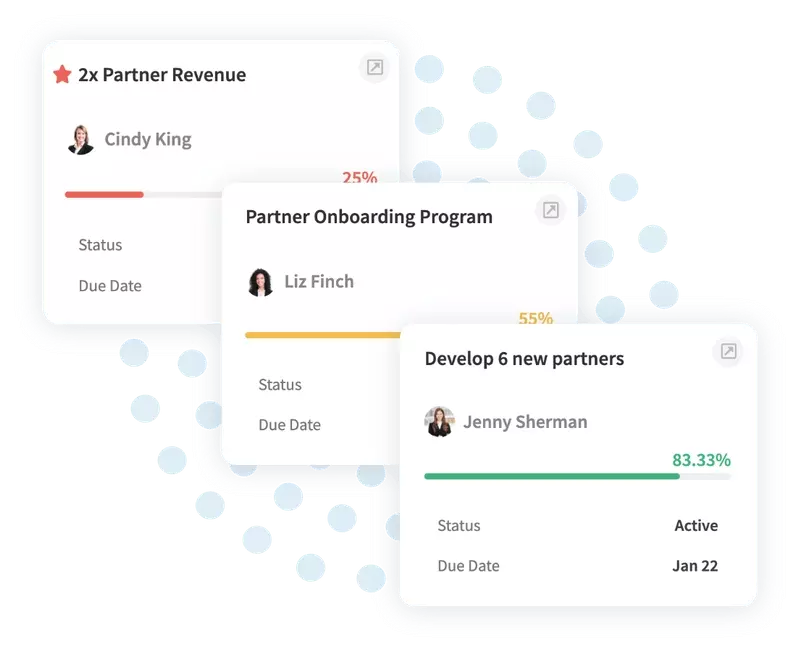Do your HR tools for performance management help employees improve?
In one survey, just 14% of employees strongly agree that they were inspired to improve their performance after a review. If you’re conducting reviews without seeing improvement, it’s time to rethink your process. We’ll explore four useful tools for performance management.
First, let’s define performance management tools and learn how HR influences the performance management process. Performance management tools facilitate employee/manager interaction, encourage a culture of accountability, and make it easy for HR to track the progress of employees. The role of HR in performance management is to facilitate the review process. HR develops performance management strategies that support the goals of the company and its individuals. The HR department can help continuously monitor performance. That might be done using a 90-day review for new employees or more informal check-in meetings with longtime employees. HR can correct assumptions or tweak processes mid-course instead of waiting months for the next official performance review.
HR tools for performance appraisals go beyond a one-time survey or a single yearly review. The best tools, such as the four below, are used throughout the year to support the goals of the organization.
1. Reviews and check-ins
Reviews and check-ins can identify strengths and weaknesses, allow management and HR to provide feedback, and help employees set new goals or adjust existing goals. That doesn’t mean you have to have weekly reviews. Instead, try these HR tools for performance management: annual reviews, 360 reviews, quarterly check-ins.
Annual reviews
An annual review should assess a wide variety of skills including:
- Communication within teams and the organization as a whole
- Collaboration and teamwork
- Ability to problem solve
- Quality and accuracy of work
- Punctuality and reliability, which also includes attendance
- Ability to meet deadlines
- Accomplishment of goals
An annual review may also include key performance indicators (KPIs) that are specific to your organization or the position.
360 Reviews
These reviews give managers and employees a broader perspective on performance by enabling peers to provide feedback to colleagues. HR can get the most out of the 360-review process by asking the right questions:
- What does the employee do well? Share examples.
- What can the employee improve on? Support with examples.
- Share examples of how the employee lives up to x or y key values.

Quarterly check-ins
Employee check-ins aren’t that different from traditional performance reviews. Both include meetings that are meant to discuss progress, goals, and share feedback. The difference is the frequency in which they occur. Quarterly check-ins feel less formal than an annual check-in, putting employees and managers at ease and enabling a free flow of ideas.
2. Goal management
For reviews and check-ins to be successful, the company must track goals set during the review process. Different goal management techniques include linking employee goals to reviews, cascading goals, and tracking KPIs.
Link employee goals to reviews
It’s not enough to review the performance of employees. You must make improvement tangible. Helping employees set goals that are based on information from the review process ensures that their goals align with the company’s goals. This approach also clarifies expectations for employees.
Cascading goals
Cascading goals align the organization from the top to the bottom. They are broken down into clear deliverables that are personalized for every employee. Managers and employees will always be able to see how their goals line up with organizational goals. When an employee completes a goal, the organizational goal will update to show progress.

Tracking KPIs
KPIs can be used to see how well individual employees are performing or to evaluate the success of a particular departmental effort. HR analytics tools can help you track KPIs in one easy dashboard.
3. Continuous feedback
Continuous feedback includes any kind of feedback that is delivered regularly. You could schedule structured reviews as part of the continuous feedback process or use an informal system of check-ins that take place randomly. A few different feedback options include 1:1 feedback and employee recognition.
4. Performance management reporting
Performance management reporting means defining trackable metrics that measure the company's success and creating reports for departments and individuals. An online performance management system allows you to record metrics that are relevant to company goals, identify activities that will help you grow, and pinpoint weaknesses that can be addressed.

When you create an effective performance management process, your company will thrive because its employees feel challenged, supported, and motivated. PerformYard performance management software makes it easy to run all the processes mentioned in this article.



